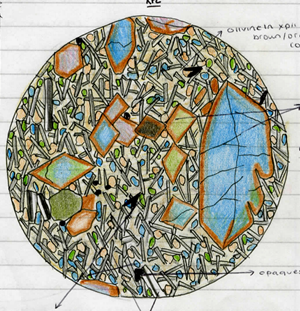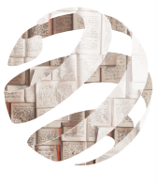
Does Sketching promote student learning? A review on undergraduate geology students
Abstract
Sketching is an important way in science and other disciplines for illustrating complex concepts with more digestible formats and has therefore long been engrained in the field of Geology either for research or teaching purposes. The following report outlines an assessment of a compulsory second year undergraduate geology module where illustrations are implemented and form a key part of the student’s learning process. The intended learning outcomes are assessed through the submission of a practical folder and an exam including a practical component. The module receives critical but highly positive reviews from the student cohort who achieve overall good marks. However, a key difference in student performance between the practical components of the exam compared to that of the coursework is apparent. Practical components are problem-based and intended to offer the students an opportunity to engage with the complexity of a given task and sketching is intended to increase the student-learning process through exploration. The benefits of sketching are unequivocally clear but it remains open whether students use illustrations to enhance the learning process to their full potential. Introduction of a learning-cycle approach appeared to have improved student performance and is recommended to promote student learning.
Keywords
Full Text:
PDFReferences
Ainsworth, S., & Loizou, A.T. (2003). The effects of self-explaining when learning with text or diagrams: Cognitive Science, 27 (4), 669‒681. https://doi.org/10.1207/s15516709cog2704_5
Bates, S., & Galloway, R. (2010). Diagnostic Tests for the Physical Sciences: A Brief Review. New Directions in the Teaching of Physical Sciences 6, 10‒20. https://doi.org/10.29311/ndtps.v0i6.372
Bonwell, C.C., & Eison, J.A. (1991). Active learning: Creating excitement in the classroom, ERIC Digest Clearinghouse on Higher Education, Document No. ED 340 272. View Item
Johnson, J.K., & Reynolds, S.J. (2005). Concept Sketches – Using Student – and instructor – generated, annotated sketches for learning, teaching, and assessment in Geology courses: Journal of Geoscience Education, 53 (1), 85‒95. http://doi.org/10.5408/1089-9995-53.1.85
Kindsvatter, R. Wilen, W., & Ishler, M. (1996). Dynamics of effective teaching, 379. White Plains, New York: Longman. View Item
Larkin, J.H., & Simon, H.A. (1987). Why a diagram is (sometimes) worth ten thousand words: Cognitive Science, 11 (1), 65‒99. https://doi.org/10.1016/S0364-0213(87)80026-5
Lawson, A., Abrahamn, M., & Renner, J. (1989). A theory of instruction: Using the learning cycle to teach science concepts and teaching skills: NARST Monograph Number One: National Association for Research in Science Teaching, 79. GS Search
Mayer, R.E. (2001). Multimedia learning: Cambridge, Cambridge University Press, 210. View Item
McKeachie, W.J. and Hofer, B. K. (Ed.). (2002). McKeachie’s Teaching Tips: Strategies, Research and Theory for College and University Teachers (11th ed.). Boston, MA: Houghton-Mifflin.
View Item
Novak, J.D., & Gowin, D.B. (1984). Learning How to Learn. New York and Cambridge, UK: Cambridge University Press, 199. GS Search
Pfister, R.A., & Eppler, M.J. (2012). The Benefits of Sketching for Knowledge Management: Journal of Knowledge Management, 16 (2), 372‒382. https://doi.org/10.1108/13673271211218924
Pfister, R.A. (2013). The Benefits of Sketching for Management. Literature Review and Experimental Evaluation: Dissertation No. 4172, University of St. Gallen, School of Management, Economics, Law, Social Sciences and International Affairs, Switzerland, 144. https://doi.org/10.1108/13673271211218924
Rudwick, M.J. (1976). The emergence of a visual language for geological sciences 1760 - 1840: History of Science, 14 (3), 149‒195. https://doi.org/10.1177%2F007327537601400301
Savin-Baden, M. (2000). Problem-based Learning in Higher Education: Untold Stories. The Society for Research into Higher Education and Open University Press, St Edmundsbury Press, Suffolk, 157. View Item
Schwartz, M.S., and Fischer, K.W. (2003). Building vs. borrowing: The challenge of actively constructing ideas: Liberal Education, 89 (3), 22–29. GS Search
Temple, S. (1994). Thought made visible - the value of sketching: Co-Design Journal, 1, 16‒25. View Item
Van der Lugt, R. (2005). How sketching can affect the idea generation process in design group meetings, Design Studies, 26 (2), 101–122. http://doi.org/10.1016/j.destud.2004.08.003
DOI: https://doi.org/10.29311/jlthe.v1i2.826
Refbacks
- There are currently no refbacks.
Copyright (c) 2018 Marc K. Reichow

This work is licensed under a Creative Commons Attribution-ShareAlike 4.0 International License.



